It wasn’t too long ago that I did a very late review of Debian 5. I’m happy to say that it didn’t take me nearly as long to get around to the latest release, Debian 6 Squeeze. If you aren’t familiar with Debian then this release is a great chance to learn about a distro that is the foundation for a lot of other distributions including Ubuntu, Linux Mint and others.
Debian has three main branches:
Stable
Testing
Unstable
Debian 6 is the latest stable release. For more background on Debian in general, please see the Wikipedia overview article.
The Debian Project is governed by the Debian Constitution and the Social Contract which set out the governance structure of the project as well as explicitly stating that the goal of the project is the development of a free operating system.[8][9] Debian is developed by over three thousand volunteers[10] from around the world and supported by donations through several non-profit organizations around the world. Most important of these is Software in the Public Interest,[11] the owner of the Debian trademark and umbrella organization for various other community free software projects.[12]
Thus, the Debian Project is an independent decentralized organization; it is not backed by a company like some other GNU/Linux distributions such as Ubuntu, openSUSE, Fedora, and Mandriva. The cost of developing all the packages included in Debian 4.0 etch (283 million lines of code), using the COCOMO model, has been estimated to be close to US$13 billion.[13] As of April 2, 2009, Ohloh estimates that the codebase of the Debian GNU/Linux project (45 million lines of code), using the COCOMO model, would cost about US$819 million to develop.[14]
There’s some very informative and interesting background there about the entire Debian project, so be sure to read it after you finish this review of Debian 6.
What’s New In This Release
Here’s a sample of the new stuff in this release:
- KDE Plasma Workspaces and KDE Applications 4.4.5
- an updated version of the GNOME desktop environment 2.30
- the Xfce 4.6 desktop environment
- LXDE 0.5.0
- X.Org 7.5
- OpenOffice.org 3.2.1
- GIMP 2.6.11
- Iceweasel 3.5.16 (an unbranded version of Mozilla Firefox)
- Icedove 3.0.11 (an unbranded version of Mozilla Thunderbird)
- PostgreSQL 8.4.6
- MySQL 5.1.49
- GNU Compiler Collection 4.4.5
- Linux 2.6.32
- Apache 2.2.16
- Samba 3.5.6
- Python 2.6.6, 2.5.5 and 3.1.3
- Perl 5.10.1
- PHP 5.3.3
- Asterisk 1.6.2.9
- Nagios 3.2.3
- Xen Hypervisor 4.0.1 (dom0 as well as domU support)
- OpenJDK 6b18
- Tomcat 6.0.18
- more than 29,000 other ready-to-use software packages, built from nearly 15,000 source packages.
I used the GNOME desktop environment for this review.
One of the neat things about this release is that it contains a truly free kernel. Non-free firmware files have been removed, but are still available to those who wish to use them. This makes Debian 6 perfect for Linux purists who do not want their desktop distros corrupted by non-free files. This release also promises faster start-up times due to changes to the boot scripts and dependency tracking.
Debian 6 also provides 10,000 new packages including Chromium and many other useful applications, and an overall total number of packages of around 29,000. I’ll have more to say about software in that section of the review. Suffice to say though that there are gobs of software available in Debian 6 and you should not lack for anything to run on your Debian-based system.
The Debian 6 installer has been improved with easier choice of language and keyboard settings, as well as better partitioning tools. The installer also supports ext4 and Btrfs file systems, and is available in 70 different languages. I’ll have more to say about the installer in that section of the review and the screenshots on that page will walk you through the entire install, from beginning to end.
Since this is a stable release, the emphasis was clearly on releasing Debian 6 in as rock-solid a form as possible rather than trying to pack it full of bloated features or cutting-edge software that could adversely affect that goal. My experience with Debian 6 indicates that the developers have pretty much accomplished what they set out to do in this release.
Hardware Requirements & Installation
Hardware Requirements
Since Debian 6 is available for so many different architectures, I’m not going to try to list all of the system requirements here. Please see the installation information for your particular architecture. You’ll find a list of supported computer architectures here. You should also look at the release notes for each architecture; they contain upgrade instructions if you are running a previous release of Debian.
Installation
The ISO file I downloaded was the 32-bit PC version and weighed in at about 4.69 GB. There are many other versions available, depending on your system. So check the installer page for download links. You can also buy Debian 6 on disc.
There was no Live DVD/CD available when I downloaded Debian 6. So this review is based on the non-live version, meaning that I couldn’t boot into a live desktop environment to use Debian 6 without installing it first. I didn’t mind that at all though; it saved me the bother of booting into the Live desktop first to start my install.
I decided to use the graphical install listed on the boot menu. The installer is pretty painless and relatively quick. The screenshots below walk you through the install, from beginning to end. The install took about 15 minutes or so. I opted to include a network mirror during the install and I recommend that you do the same.
Don’t let the number of steps throw you; I found that installing Debian 6 is pretty much as painless as installing one of its derivatives such as Ubuntu. The Debian 6 installer is the best version yet and promises to make Debian accessible to those who are new to desktop Linux and who may never have heard of Debian before. That’s a significant accomplishment and the Debian developers deserve a pat on the back for it.
Booting & Login
Here’s what the boot menu and login screens look like:
The Desktop
The Debian 6 Squeeze desktop has the neat Debian wallpaper. It’s quite spacey and gives this distro a little bit more personality. I like the fact that the Debian developers haven’t lost sight with the fact that Linux should be fun as well as useful and the wallpaper reflects that.
The desktop itself is not cluttered up with icons, there are three included:
Computer
Home
Trash
Navigating the desktop menus and panel is easy and comfortable. It’s GNOME so if you’ve used it before you’ll be right at home in Debian 6 Squeeze. Applications are broken down into the usual categories:
- Application Menu
The panel also has a Places & System menu as well as icons for various other things across it including your network, date and open applications & menus.
Themes
There are 21 different themes, with the default theme being Clearlooks. More are available online.
Wallpaper
There are 20 different wallpapers included, though none of the other ones is quite as fun or spacey as the default Debian wallpaper. You can get more online.
Bundled Software
Here’s a sample of the software included in this release.
Games
AisleRiot Solitaire
Chess
Five or More
Four-in-a-Row
FreeCell Solitaire
lagno
Klotski
Mahjongg
Mines
Nibbles
Quadrapassel
Robots
Sudoku
Tali
Tetravex
Graphics
GIMP
Inkscape
OpenOffice.org Draw
Shotwell
Simple Scan
XSane
Internet
Ekiga
Empathy
Epiphany
Evolution Mail
Iceweasel
Liferea Feed Reader
Remmina
Transmission
Multimedia
Audio CD Extractor
Brasero Disc Burner
Cheese Webcam Booth
Movie Player
Rhythmbox Music Player
Sound Recorder
Office
Dictionary
OpenOffice.org
As you can tell from the list, Debian 6 Squeeze comes with a pretty robust default selection of software that should meet the needs of most desktop users.
Software Management
If you find yourself needing more software, just click the System menu on the panel then click Administration to access the Software Center. The Software Center is very easy to use, applications are broken down into categories and you can search as well.
There’s a ton of applications available for you to download, far more than most desktop users will probably ever need. But that’s okay because sometimes it’s just fun to browse the Software Center and poke around to see what’s available.
As I noted earlier, there are about 29,000 applications available. Software junkies should be careful; if they aren’t careful they could go overboard installing software on their systems.
Adding & Removing Software
It’s very easy to install or remove software. Find the application you want to install and click the install button (or the remove button if it’s already installed. The screenshots below walk you through a Chromium download and install.
Please note that when I went to install Chromium, Debian 6 defaulted to the CD rather than downloading it. I had to go into the software sources menu and uncheck the CD box so that Debian 6 would download it from the repository instead. This is a pretty minor thing but might throw people off who install Debian 6 in a virtual machine via an ISO file.
Sound and Multimedia
YouTube & Flash
I had no problem running most YouTube videos in Debian 6. The Gnash SWF Viewer comes installed by default.
GNU Gnash is the GNU Flash movie player — Flash is an animation file format pioneered by Macromedia which continues to be supported by their successor company, Adobe. Flash has been extended to include audio and video content, and programs written in ActionScript, an ECMAScript-compatible language. Gnash is based on GameSWF, and supports most SWF v7 features and some SWF v8 and v9.
SWF v10 is not supported by GNU Gnash.
Multimedia Applications
The default selection of multimedia applications includes Audio CD Extractor, Brasero Disc Burner, Cheese Webcam Booth, Movie Player and Rhythymbox. There’s certainly enough to get you started and to perform many of the multimedia functions you might need.
I recommend checking the Software Center for more though. There are about 249 multimedia packages available there that might be useful if the default selection doesn’t cut it for you. VLC should definitely be on your list of installed multimedia applications; it’s incredibly useful to have on your system.
Problems & Headaches
One thing I didn’t like about Debian 6 is that it still comes with OpenOffice.org instead of LibreOffice. Given that this is Debian stable, it’s not surprising. However, I would like to see LibreOffice eventually succeed OpenOffice.org as soon as possible.
I noted earlier how Debian 6 defaults to the CD when you try to install a new piece of software. This is a very minor potential problem though and can be easily fixed by accessing the software sources menu and unchecking the cdrom box. You can access the software sources menu by clicking on the Edit menu link in the Software Center.
Beyond that, I don’t have much to note or complain about in Debian 6 Squeeze. My experience with it has been quite good. I did not notice any instability or application crashes while using Debian 6.
Please note that you can find a list of known Debian 6 problems on the Debian site. There doesn’t seem to be a whole lot there yet though as I write this review.
Where To Get Help
Please take a moment to register for the DLR forum; everybody is welcome. You are welcome to post a message in the forum and we’ll do our best to point you in the right direction. The forum contains discussions about Linux, as well as other topics. Please stop by and say hello when you have a chance.
You might also want to check out the Debian support page for links to documentation, known problems, wiki, mailing lists, newsgroups and other resources.
Final Thoughts & Who Should Use It
I’m very happy to recommend Debian 6 for most desktop users, particularly those who want a truly free distribution. Debian has come a long, long way from its earliest days and this release shines as a desktop option.
Even those totally new to Linux should give it a shot; I think they will be very surprised and pleased by Debian 6. I was very happy while using it and it will remain one of my regular desktop distributions. Give it a download and see what you think of it.
For more information about Debian in general, check out the Debian System, Learning Debian, and the Debian Bible.
What’s your take on this distro? Tell me in the comments below. Visit Eye On Linux for Linux opinion columns and quick looks, and visit JimLynch.com for other technology coverage.
Summary Table:
| Product: | Debian 6 Squeeze |
| Web Site: | http://www.debian.org/ |
| Price: | Free |
| Pros: | Installer enhancements; updated software packages; non-free firmware files have been removed to a separate archive. |
| Cons: | The installer has a lot of steps; additional software installation defaults to the CD. |
| Suitable For: | Beginner, intermediate and advanced Linux users. |
| Summary: | Debian 6 Squeeze is a great step forward for the Debian project. |
| Rating: | 5/5 |













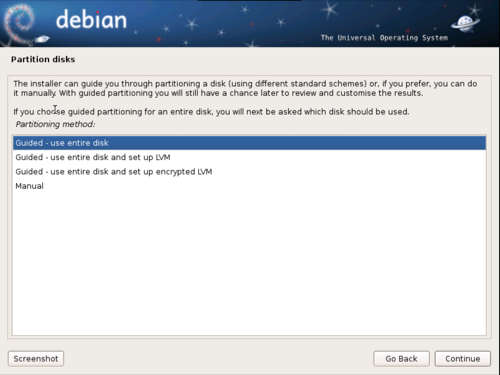





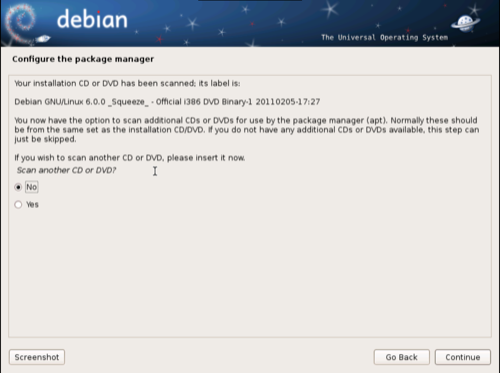

























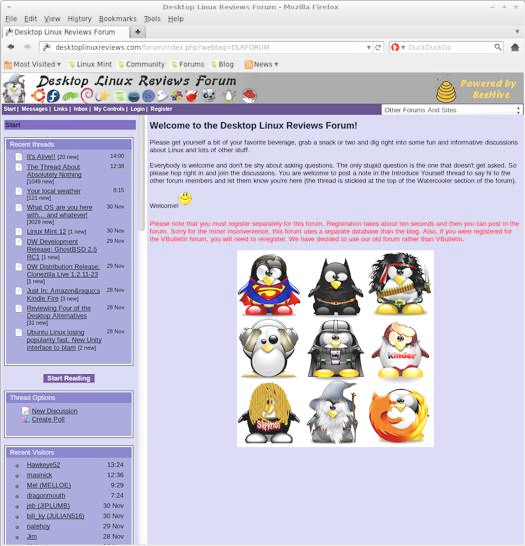


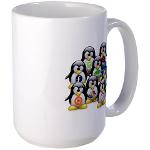
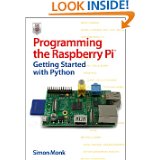
Pingback: Debian 6 Squeeze Reviews
Pingback: ????? Debian 6 Squeeze | Debian-Ubuntu
Pingback: Debian 6.0 - Desktop Linux Reviews » Nix4me.com